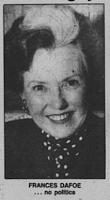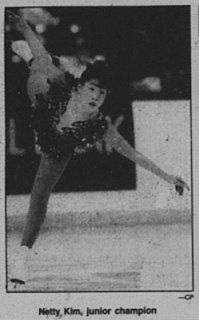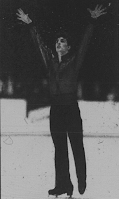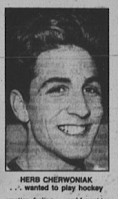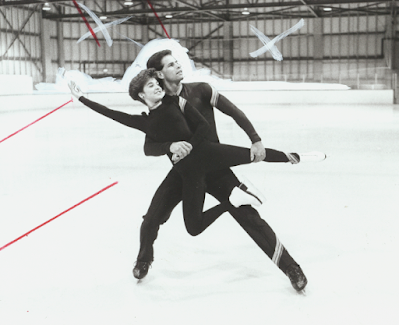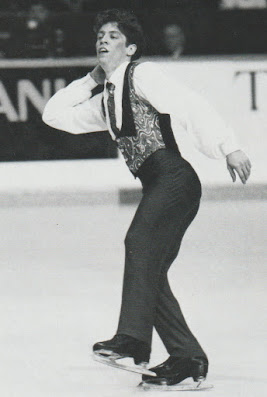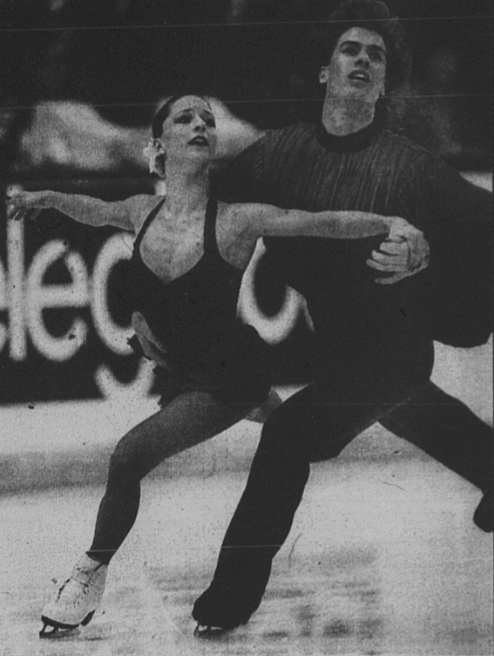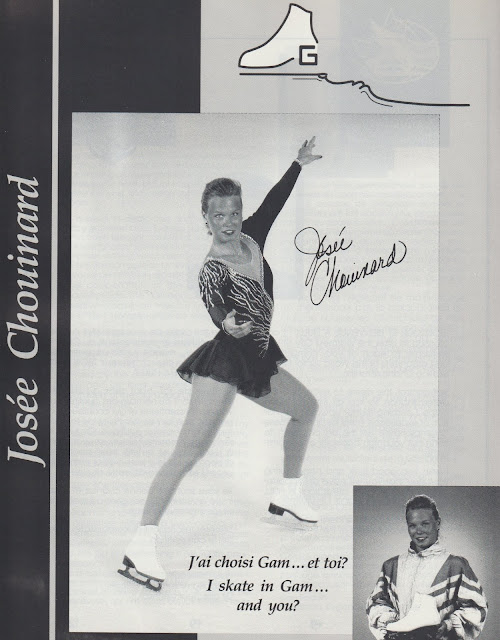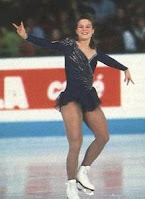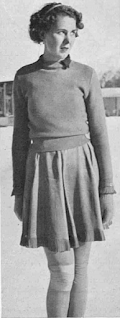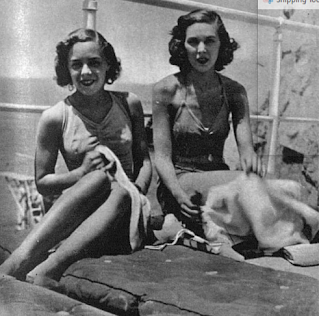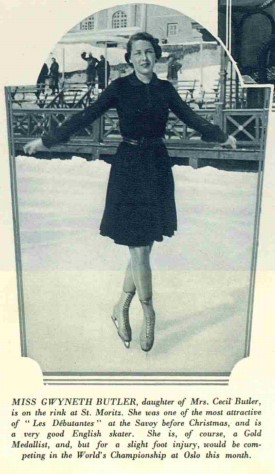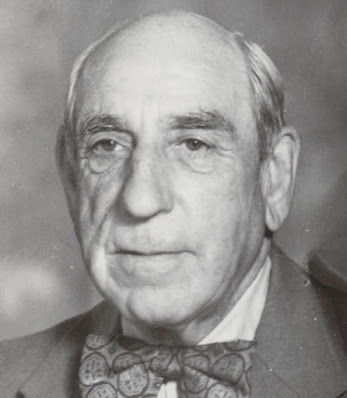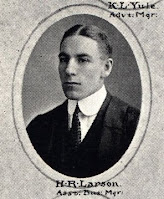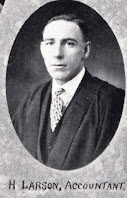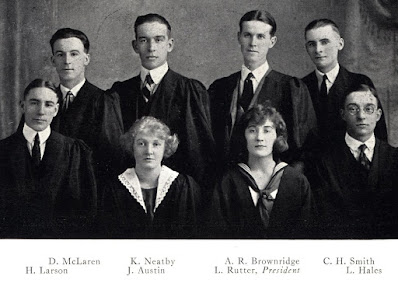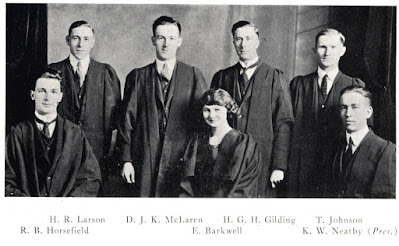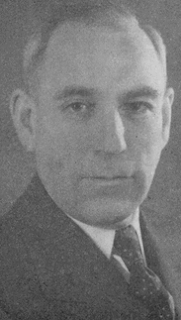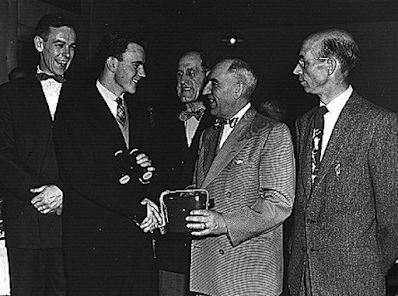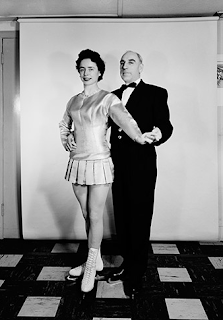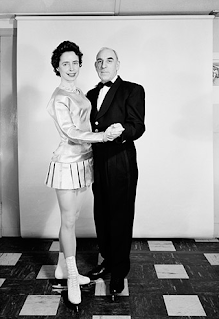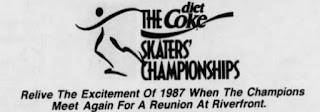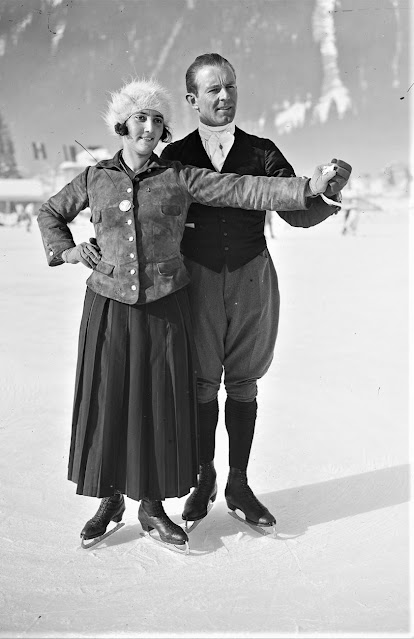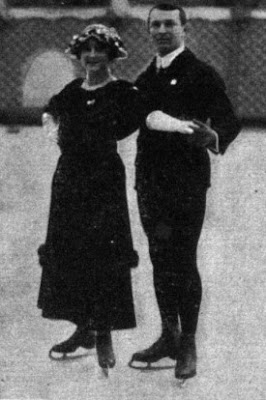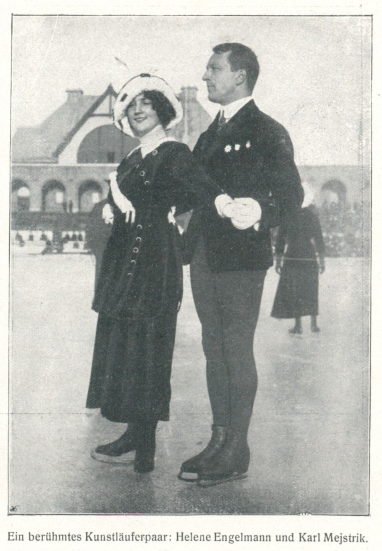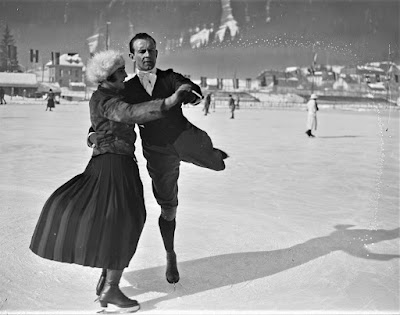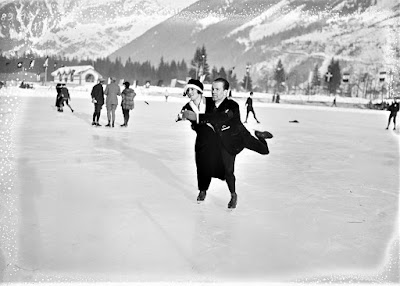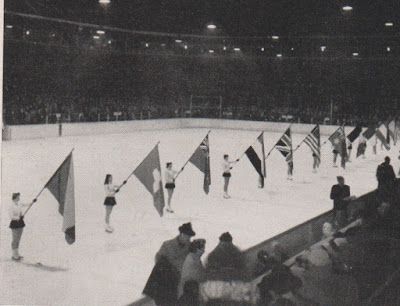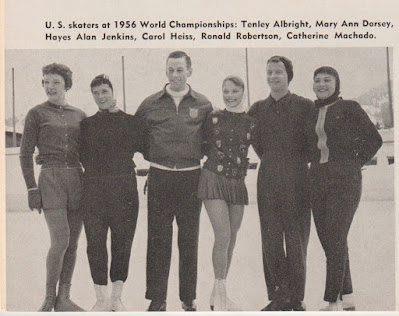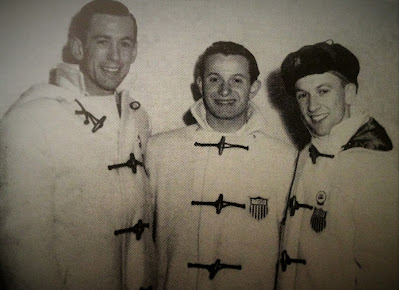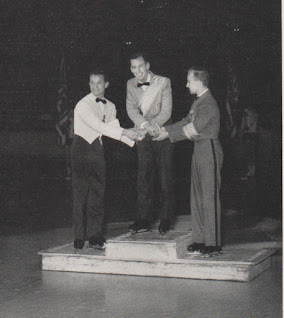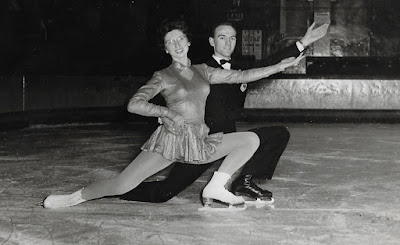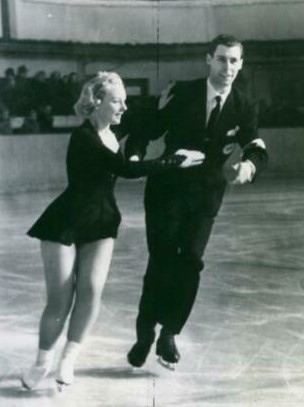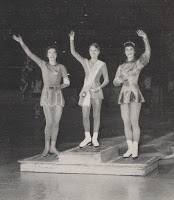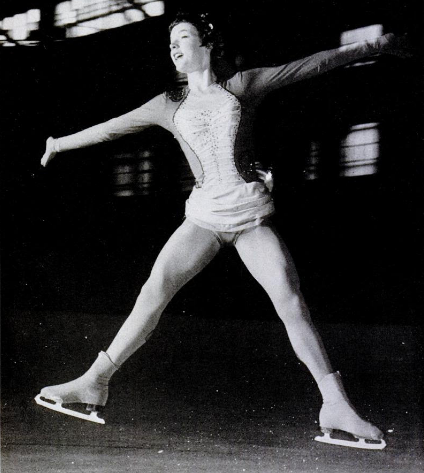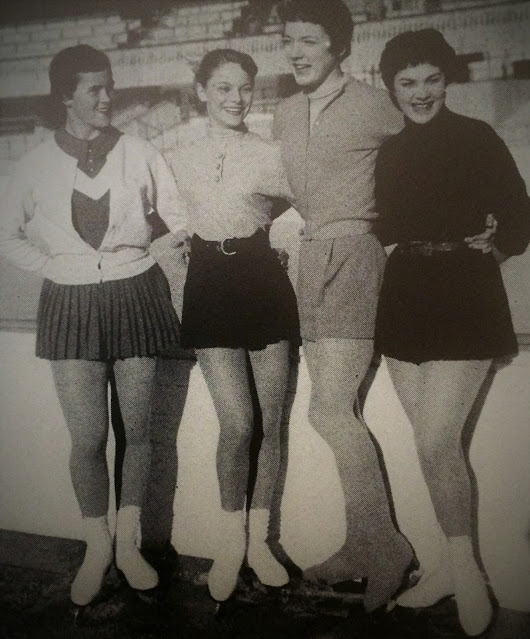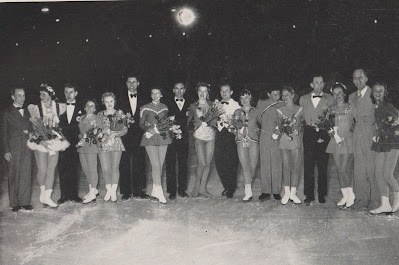Royal Bank advertisement for the 1991 Canadian Championships. Photo courtesy Saskatoon Public Library, Local History Department.
The year was 1991 and from February 6 to 10, a who's who of Canadian figure skating gathered at Saskatchewan Place and the Harold Latrace Arena in Saskatoon for the 1991 Royal Bank Canadian Figure Skating Championships.
Regina had twice played host to the Canadian Championships, most recently in 1984, but the 1991 event marked Saskatoon's first kick at the can. Fortunately, a chinook made for smooth travel for the thousands of competitors, officials and spectators that flocked to the city in the dead of a long Prairie winter. Johnny Esaw, Debbi Wilkes, Rod Black and Tracy Wilson acted as commentators on CTV's generous coverage of the event - seven hours in total, much of it live. Let's take a look back at how things played out on the ice!
THE NOVICE AND JUNIOR EVENTS
For the first time ever, Quebec pairs swept the podium in the novice pairs event. Caroline Haddad and Jean-Sébastien Fecteau, representing the CPA St-Léonard, were the winners. Martine Michaud and Sylvain Leclerc won the novice compulsory dances, but were overtaken in the free dance by Marisa Gravino and Patrice Lauzon in another historic first Quebec sweep of the novice dance. Although school figures had been eliminated from the senior ranks, novice skaters were still required to perform them. To the delight of the home crowd, fifteen year old Amanda Zerr of Saskatoon won the novice women's school figures. Unfortunately, she dropped down to fourth overall, hampered by an eighth place showing in the short program. The winner was another Quebec skater, Stephanie Fiorito, who had finished only fourteenth in 1990. Fifteen year old Jeffrey Langdon dominated the novice men's event from start to finish. Yvan Desjardins of the CPA Boisbriand placed third, his hopes of making it four for four for Quebec dashed.
Thirteen year old Penny Papaioannou and seventeen year old Raoul LeBlanc defeated Jamie Salé and Jason Turner to win the junior pairs event. They had been novice champions the year prior. Sixteen year old Marie-France Dubreuil and eighteen year old Bruno Yvars led yet another Quebec sweep in junior dance, skating a free dance inspired by The Oka Crisis.
The winner of the junior women's event was fourteen year old Netty Kim of the Upper Canada/North York Skating Club. Coached by Bob Emerson, Kim won both the short program and free skate. She was the youngest of the sixteen competitors and had placed only sixth in novice in 1990. Fourth was a young Kristy Sargeant, who was only tenth entering the free skate. Halfway through her program, a tiara she was wearing fell off. The referee asked her if she wanted to restart her program. They laughed when she told them she just wanted to keep on going because she'd skated cleanly up to that point.
Saskatoon's Herb Cherwoniak won the Canadian junior men's event in front of a hometown. Matthew Knight and Ravi Walia, British Columbian skaters who placed one-two in novice men's in 1990, placed fifth and sixth. Coached by Dale Hazell, twenty year old Cherwoniak made history as the first man in history (and only the second skater) from Saskatchewan to win a national title in singles skating. In the previous few years, he'd suffered from appendicitis, a broken toe and disappointing performances. He choreographed his own free skating program and landed three triple jumps.
THE PAIRS AND FOURS COMPETITIONS
Coached by Josée Picard and Éric Gilles, Isabelle Brasseur and Lloyd Eisler had won the Canadian title in 1989 and the silver medal at the 1990 World Championships in Halifax. However, they had finished only third the year prior at the Canadian Championships. Cindy Landry and Lyndon Johnston, the winners in 1990, had moved on. Landry was by this point skating professionally with Peter Oppegard, the American skater who'd won the bronze medal at the 1988 Winter Olympic Games in Calgary. Less than two months prior to the Saskatoon event, Eisler had injured himself seriously while playing hockey. He arrived sporting a titanium leg brace and wasn't allowed to even attempt jumps until a week prior to the competition - and then it was only singles. This was not exactly the ideal position any couple would want to be in, let alone if they were planning on staging a comeback.
In the book "To Catch A Dream", Isabelle Brasseur recalled, "Just before the short program, [Lloyd] told me, 'If I can't manage my jump, I'll do a single or skip it altogether, but you keep going and do yours as best you can. We'll be deducted for it but it should be all right, since I'm sure I can do all the pair elements.'" Eisler went for the side-by-side double Axel, landing it on two feet; Brasseur landed hers cleanly.
Left: Commemorative pin from the event. Right: World Champion Frances Dafoe, who acted as one of the judges in Saskatoon. Photo courtesy Saskatoon Public Library, Local History Department.
Regina had twice played host to the Canadian Championships, most recently in 1984, but the 1991 event marked Saskatoon's first kick at the can. Fortunately, a chinook made for smooth travel for the thousands of competitors, officials and spectators that flocked to the city in the dead of a long Prairie winter. Johnny Esaw, Debbi Wilkes, Rod Black and Tracy Wilson acted as commentators on CTV's generous coverage of the event - seven hours in total, much of it live. Let's take a look back at how things played out on the ice!
THE NOVICE AND JUNIOR EVENTS
For the first time ever, Quebec pairs swept the podium in the novice pairs event. Caroline Haddad and Jean-Sébastien Fecteau, representing the CPA St-Léonard, were the winners. Martine Michaud and Sylvain Leclerc won the novice compulsory dances, but were overtaken in the free dance by Marisa Gravino and Patrice Lauzon in another historic first Quebec sweep of the novice dance. Although school figures had been eliminated from the senior ranks, novice skaters were still required to perform them. To the delight of the home crowd, fifteen year old Amanda Zerr of Saskatoon won the novice women's school figures. Unfortunately, she dropped down to fourth overall, hampered by an eighth place showing in the short program. The winner was another Quebec skater, Stephanie Fiorito, who had finished only fourteenth in 1990. Fifteen year old Jeffrey Langdon dominated the novice men's event from start to finish. Yvan Desjardins of the CPA Boisbriand placed third, his hopes of making it four for four for Quebec dashed.
Photo courtesy Saskatoon Public Library, Local History Department
Photo courtesy Saskatoon Public Library, Local History Department.
Herb Cherwoniak. Photo courtesy Saskatoon Public Library, Local History Department.
Saskatoon's Herb Cherwoniak won the Canadian junior men's event in front of a hometown. Matthew Knight and Ravi Walia, British Columbian skaters who placed one-two in novice men's in 1990, placed fifth and sixth. Coached by Dale Hazell, twenty year old Cherwoniak made history as the first man in history (and only the second skater) from Saskatchewan to win a national title in singles skating. In the previous few years, he'd suffered from appendicitis, a broken toe and disappointing performances. He choreographed his own free skating program and landed three triple jumps.
THE PAIRS AND FOURS COMPETITIONS
Isabelle Brasseur and Lloyd Eisler. Photo courtesy "La Presse" archive, Bibliothèque et Archives nationales du Québec.
Coached by Josée Picard and Éric Gilles, Isabelle Brasseur and Lloyd Eisler had won the Canadian title in 1989 and the silver medal at the 1990 World Championships in Halifax. However, they had finished only third the year prior at the Canadian Championships. Cindy Landry and Lyndon Johnston, the winners in 1990, had moved on. Landry was by this point skating professionally with Peter Oppegard, the American skater who'd won the bronze medal at the 1988 Winter Olympic Games in Calgary. Less than two months prior to the Saskatoon event, Eisler had injured himself seriously while playing hockey. He arrived sporting a titanium leg brace and wasn't allowed to even attempt jumps until a week prior to the competition - and then it was only singles. This was not exactly the ideal position any couple would want to be in, let alone if they were planning on staging a comeback.
Left: Isabelle Brasseur and Lloyd Eisler. Right: Christine Hough and Doug Ladret. Photos courtesy Saskatoon Public Library, Local History Department.
Christine Hough and Doug Ladret
The two received a standing ovation for their gutsy effort and led Christine 'Tuffy' Hough and Doug Ladret, who had been landing side-by-side triple toe-loop's in practice, entering the free skate. In third were Michelle Menzies and Kevin Wheeler. Wheeler, too, was injured. In "Skating" magazine Peter K. Robertson remarked, "Kevin Wheeler's story of injury was somewhat different. After he entered the hospital for what was to be minor surgery, it was discovered in a 4 and one-half-hour operation that a tumor had attached itself to a nerve running from his knee to his ankle. He was released from the hospital just before Christmas and advised not to skate until May, but such is the determination of figure skaters that he and partner Michelle Menzies were in Saskatoon trying for a spot on the World Team anyway."
The fact that Brasseur and Eisler somehow managed to go out and skate an outstanding free skate to reclaim the Canadian title despite his injury was eclipsed by an incident so dramatic that even a veteran broadcaster like Johnny Esaw was visibly moved. Just over forty seconds into their free skate, Christine Hough and Doug Ladret had a disastrous fall on their split triple twist. Twenty-nine year old Ladret landed on top of Hough. She hit her shoulder on his head when they went down, then smacked her head on the ice. The couple almost slid into the boards. They were given a five-minute break by the referee, during which time they were quickly examined by Dr. Jim Werbecki. They courageously restarted their program from the beginning and skated well enough to take the silver over Stacey Ball and Jean-Michel Bombardier, Michelle Menzies and Kevin Wheeler and Kristy Sargeant and Colin Epp. Their coach, Hough's stepfather Kerry Leitch, told reporters, "I admire the courage for trying to do the entire program. I wouldn't have gotten up. Pair skaters have got to have more guts than any athletes in skating, anyway. A lot of hockey players wouldn't come back from a check like that." With her arm in a sling, Hough addressed the media after their performance and said, "I want to go to Worlds. I had to skate, no matter how much I hurt. Ladret added, "That's the way things are. Unless something's broken, we keep going."
Despite their injuries, Hough and Ladret and Lloyd Eisler still participated in the fours event. Hough and Ladret had been members of the winning four the previous three years. Eisler had finished on the podium in the eighties with former partners Karen Westby and Katherina Matousek, but it was Isabelle Brasseur's first time skating in the discipline at Canadians. Brasseur and Eisler and Ball and Bombardier defeated Hough and Ladret and Menzies and Wheeler to claim the title. One of the competitors, Kimbereley Esdaile, fell and hit her head during the competition and spent a night in the hospital under observation. There were so many injuries among the pairs and fours flock that "Skating" magazine that it was like "The Battle Of Wounded Knee".
THE MEN'S COMPETITION
Two time and defending Canadian Champion Kurt Browning had followed up his win at the 1990 World Championships with victories at the Goodwill Games, Skate Canada and the Nation's Cup. In one of the early practices in Sasktoon, he landed three quads and several triple/triple combinations. "Then," he recalled in his book "Kurt: Forcing The Edge", "my back went haywire. It was a replay from Skate America in 1989, and the spasms were painful and intense. Mr. [Jiranek] and I considered withdrawing." Thanks to sessions with physiotherapsist Brian Craven, Browning was able to muster up the strength to deliver an outstanding original program featuring a triple Axel/double-toe-loop combination and triple flip, earning a 6.0 for artistic impression - his first at the Canadian Championships. Elvis Stojko, Michael Slipchuk, Patrick Brault and Brent Frank trailed him in the standings. All but Frank landed the triple Axel. It was Slipchuk's first clean original program at the Canadians since the 1989 event in Ottawa. He had been sick with strep throat, missed Divisionals and valuable practice time in the weeks leading up to the event. Four men landed the triple Axel combination in the originalprogram, which was a big first for the Canadian Championships.
In contrast , the men's free skate in Saskatoon wasn't one of the more memorable ones on record. The final flight was littered with up's and down's. Kurt Browning was less than stellar. He missed one of his triple Axel attempts and stumbled on two combinations. He did, however, attempt a quad but landed it on two foot. Referee Jean Matthews ruled that the jump was clean. Elvis Stojko doubled his first triple Axel attempt and missed his second but threw in a third for good measure, which helped him beat Browning on the first mark.
Kurt Browning won his third Canadian title over Elvis Stojko on the strength of his presentation, along with his win in the short program. Michael Slipchuk took the bronze, ahead of Brent Frank, Patrick Brault, Matthew Hall, Norm Proft, Marcus Christensen, Sébastien Britten and Kris Wirtz. The top three were the exact same as in Sudbury the year prior.
THE ICE DANCE COMPETITION
Since Tracy Wilson and Rob McCall had danced on to the professional ranks in 1988, no couple had managed to show any kind of 'staying power' at the top. 1989 Champions Karyn and Rod Garossino had moved on. 1990 Champions Jo-Anne Borlase and Martin Smith had parted ways, paving the way for Smith's partnership with Michelle McDonald of Abbotsford, British Columbia, who had finished second in 1989 and 1990 with partner Mark Mitchell. At twenty-seven and twent- three, McDonald and Smith were already considerably older than many of their rivals and the fact they'd only teamed up in August of 1990 put them at a distinct disadvantage, particularly in the compulsories.
After the compulsory dances - the Ravensburger Waltz and Argentine Tango - yet another couple had choctawed their way to the top of the standings. Twenty year old Jacqueline Petr of Winnipeg and twenty-two year old Mark Janoschak of Bramalea, Ontario, who trained in Toronto under Roy Bradshaw, took the lead while McDonald and Smith tied for second with Penny Mann and Juan-Carlos Noria. Mann was a Newfoundlander; Noria was born in Venezuela.
McDonald and Smith topped Petr and Janoshak in the Blues OSP, skating a delightfully unique program to "Creole Love Call". They clinched the Canadian title with an interesting free dance based on the 1941 Tyrone Power and Rita Hayworth film "Blood And Sand". Petr and Janoshak's fabulous free dance, an eclectic program set to music from "Pee-Wee's Big Adventure", was choreographed by Toller Cranston, who was in Saskatoon coaching Karen Preston with Mrs. Ellen Burka. He also designed avant garde costumes for them, but they got the thumbs down at Skate Canada. They didn't wear them in Saskatoon but later broke them out again in Munich at Worlds. They settled for the silver ahead of Mann and Noria, whose "Queen Of Sheba" free dance fell flat. Dara Bailey and Rock Lemay finished fourth and Laurie Palmer and Mark Mitchell placed fifth, hampered by a disappointing fall that had them eighth in the compulsories Future Canadian Medallists Jennifer Boyce and Michel Brunet placed seventh.
THE WOMEN'S COMPETITION
Charlene Wong, a five time medallist at Canadians, had turned professional. A three-way race was framed between defending Canadian Champion Lisa Sargeant, 1989 Champion Karen Preston and Josée Chouinard, a promising young star from Laval, Quebec who had won the bronze in Sudbury in 1990. Sargeant toyed with the idea of attempting a triple Axel combination in her short program set to the music of Liberace, but decided to play it safe and go for the double flip/triple toe-loop combination instead. Twenty-one year old Chouinard won the short program with four first place ordinals to Preston's one and Sargeant's two.
As was so often the case in the nineties, the final flight of the women's free skate in Saskatoon was chock full of mistakes. Reporters and spectators alike went berserk, as they often did, and a mountain was made out of a molehill when Josée Chouinard fell during her footwork sequence. Her toe-pick tumble didn't take her out of the running whatsoever, and she managed to win her first Canadian title over Sargeant, Tanya Bingert, Preston, Jutta Cossette, Annie St. Hilaire, Margot Bion, Stacey Ball, Cynthia Amy and Diane Takeuchi. Chouinard and Sargeant were named to the World team. In the "Edmonton Journal", one unnamed 'veteran Canadian coach' was quoted as saying, "Our best chance right now might be to send Liz [Manley] and a picture of Barbara Ann Scott."
Photo courtesy "Skating" magazine
The fact that Brasseur and Eisler somehow managed to go out and skate an outstanding free skate to reclaim the Canadian title despite his injury was eclipsed by an incident so dramatic that even a veteran broadcaster like Johnny Esaw was visibly moved. Just over forty seconds into their free skate, Christine Hough and Doug Ladret had a disastrous fall on their split triple twist. Twenty-nine year old Ladret landed on top of Hough. She hit her shoulder on his head when they went down, then smacked her head on the ice. The couple almost slid into the boards. They were given a five-minute break by the referee, during which time they were quickly examined by Dr. Jim Werbecki. They courageously restarted their program from the beginning and skated well enough to take the silver over Stacey Ball and Jean-Michel Bombardier, Michelle Menzies and Kevin Wheeler and Kristy Sargeant and Colin Epp. Their coach, Hough's stepfather Kerry Leitch, told reporters, "I admire the courage for trying to do the entire program. I wouldn't have gotten up. Pair skaters have got to have more guts than any athletes in skating, anyway. A lot of hockey players wouldn't come back from a check like that." With her arm in a sling, Hough addressed the media after their performance and said, "I want to go to Worlds. I had to skate, no matter how much I hurt. Ladret added, "That's the way things are. Unless something's broken, we keep going."
Despite their injuries, Hough and Ladret and Lloyd Eisler still participated in the fours event. Hough and Ladret had been members of the winning four the previous three years. Eisler had finished on the podium in the eighties with former partners Karen Westby and Katherina Matousek, but it was Isabelle Brasseur's first time skating in the discipline at Canadians. Brasseur and Eisler and Ball and Bombardier defeated Hough and Ladret and Menzies and Wheeler to claim the title. One of the competitors, Kimbereley Esdaile, fell and hit her head during the competition and spent a night in the hospital under observation. There were so many injuries among the pairs and fours flock that "Skating" magazine that it was like "The Battle Of Wounded Knee".
THE MEN'S COMPETITION
Kurt Browning. Photo courtesy Toronto Public Library, from Toronto Star Photographic Archive. Reproduced for educational purposes under license permission.
In contrast , the men's free skate in Saskatoon wasn't one of the more memorable ones on record. The final flight was littered with up's and down's. Kurt Browning was less than stellar. He missed one of his triple Axel attempts and stumbled on two combinations. He did, however, attempt a quad but landed it on two foot. Referee Jean Matthews ruled that the jump was clean. Elvis Stojko doubled his first triple Axel attempt and missed his second but threw in a third for good measure, which helped him beat Browning on the first mark.
Norm Proft
Kurt Browning won his third Canadian title over Elvis Stojko on the strength of his presentation, along with his win in the short program. Michael Slipchuk took the bronze, ahead of Brent Frank, Patrick Brault, Matthew Hall, Norm Proft, Marcus Christensen, Sébastien Britten and Kris Wirtz. The top three were the exact same as in Sudbury the year prior.
THE ICE DANCE COMPETITION
Since Tracy Wilson and Rob McCall had danced on to the professional ranks in 1988, no couple had managed to show any kind of 'staying power' at the top. 1989 Champions Karyn and Rod Garossino had moved on. 1990 Champions Jo-Anne Borlase and Martin Smith had parted ways, paving the way for Smith's partnership with Michelle McDonald of Abbotsford, British Columbia, who had finished second in 1989 and 1990 with partner Mark Mitchell. At twenty-seven and twent- three, McDonald and Smith were already considerably older than many of their rivals and the fact they'd only teamed up in August of 1990 put them at a distinct disadvantage, particularly in the compulsories.
Jacqueline Petr and Mark Janoschak. Photo courtesy Saskatoon Public Library, Local History Department.
After the compulsory dances - the Ravensburger Waltz and Argentine Tango - yet another couple had choctawed their way to the top of the standings. Twenty year old Jacqueline Petr of Winnipeg and twenty-two year old Mark Janoschak of Bramalea, Ontario, who trained in Toronto under Roy Bradshaw, took the lead while McDonald and Smith tied for second with Penny Mann and Juan-Carlos Noria. Mann was a Newfoundlander; Noria was born in Venezuela.
Michelle McDonald and Martin Smith. Photos courtesy Saskatoon Public Library, Local History Department (left) and "Skating" magazine (right).
THE WOMEN'S COMPETITION
Charlene Wong, a five time medallist at Canadians, had turned professional. A three-way race was framed between defending Canadian Champion Lisa Sargeant, 1989 Champion Karen Preston and Josée Chouinard, a promising young star from Laval, Quebec who had won the bronze in Sudbury in 1990. Sargeant toyed with the idea of attempting a triple Axel combination in her short program set to the music of Liberace, but decided to play it safe and go for the double flip/triple toe-loop combination instead. Twenty-one year old Chouinard won the short program with four first place ordinals to Preston's one and Sargeant's two.
As was so often the case in the nineties, the final flight of the women's free skate in Saskatoon was chock full of mistakes. Reporters and spectators alike went berserk, as they often did, and a mountain was made out of a molehill when Josée Chouinard fell during her footwork sequence. Her toe-pick tumble didn't take her out of the running whatsoever, and she managed to win her first Canadian title over Sargeant, Tanya Bingert, Preston, Jutta Cossette, Annie St. Hilaire, Margot Bion, Stacey Ball, Cynthia Amy and Diane Takeuchi. Chouinard and Sargeant were named to the World team. In the "Edmonton Journal", one unnamed 'veteran Canadian coach' was quoted as saying, "Our best chance right now might be to send Liz [Manley] and a picture of Barbara Ann Scott."
Josée Chouinard. Photos courtesy "Chatelaine" magazine, Bibliothèque et Archives nationales du Québec.
Josée Chouinard was the first Quebec woman since Margot Barclay Wilkins in 1928 to claim the Canadian title. In her book "All That Glitters", Chouinard recalled, "Although I was obviously excited to win, I was having trouble accepting my newfound fame and the big expectations people now had for me... It was difficult for me to accept the changes that occurred in my life. Overnight, I was the Canadian Champion, and I had a hard time dealing with the attention it brought to me. No longer was I the little girl from Laval, Quebec who skated because she loved the sport. I was treated differently and people suddenly expected great things from me."
Thanks to a generous donation of VHS tapes by Skate Guard reader Amy, you can take a trip back in time and rewatch highlights of the 1991 Canadian Championships in digitized video form. The YouTube playlist, which includes a handful of the men's free skates and performances from the Parade Of Champions, can be found above or at https://www.youtube.com/playlist?list=PL6c_NN6KdCfLakgDyoOEW8H53chFsaPy1.
Skate Guard is a blog dedicated to preserving the rich, colourful and fascinating history of figure skating. Over ten years, the blog has featured over a thousand free articles covering all aspects of the sport's history, as well as four compelling in-depth features. To read the latest articles, follow the blog on Facebook, Twitter, Pinterest and YouTube. If you enjoy Skate Guard, please show your support for this archive by ordering a copy of figure skating reference books "The Almanac of Canadian Figure Skating", "Technical Merit: A History of Figure Skating Jumps" and "A Bibliography of Figure Skating": https://skateguard1.blogspot.com/p/buy-book.html.



